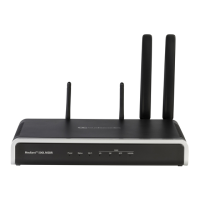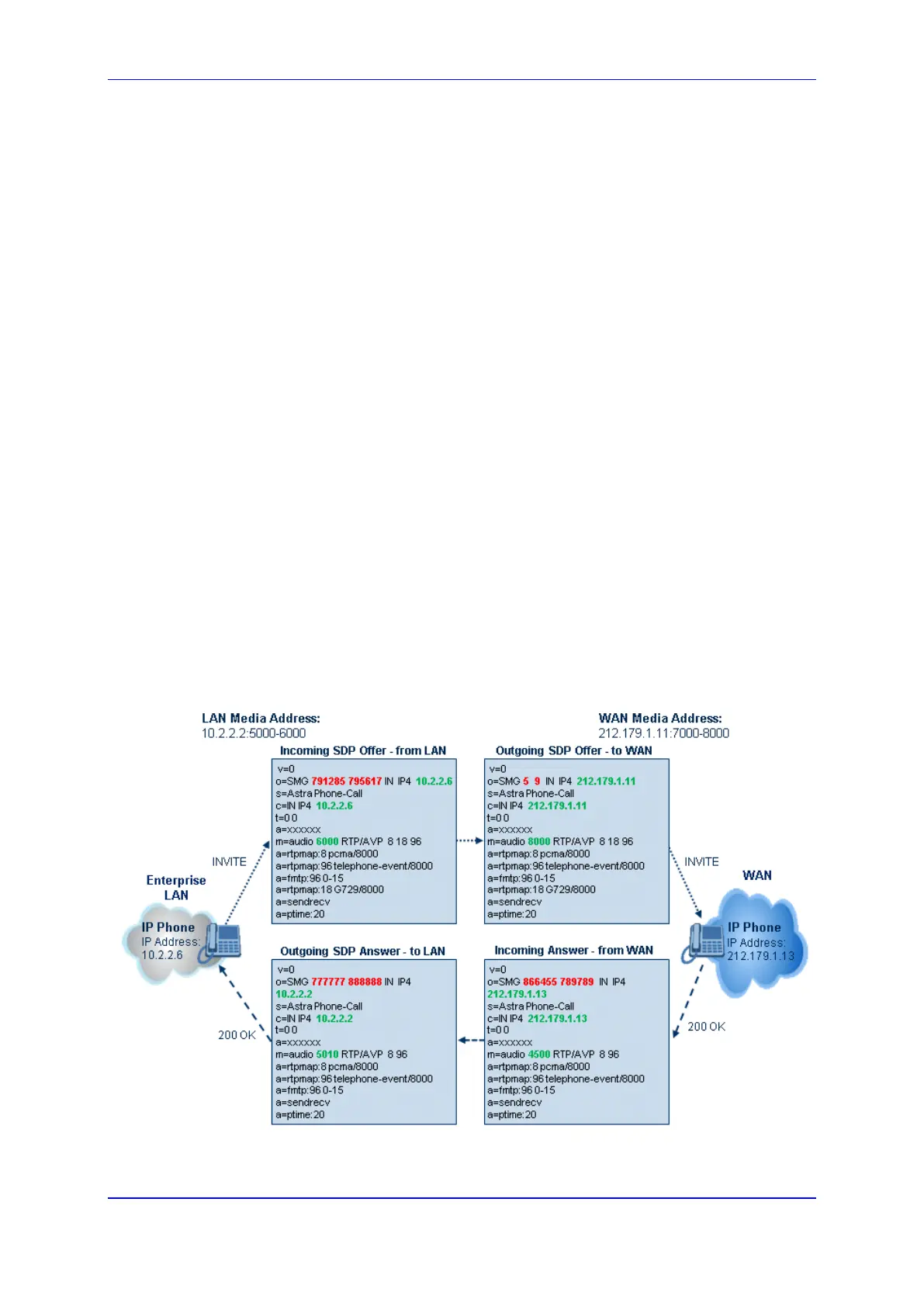User's Manual 31. SBC Overview
Version 6.8 521 Mediant 500L MSBR
According to the above functionalities, the call can be configured to operate in one of the
following modes:
Media Anchoring without Transcoding (Transparent): RTP traverses the device
with minimal RTP packet changes (no DSP resources needed). This is typically used
to solve NAT, firewall, and security issues. In this mode, all the "audio" coders in the
received offer are included in the SBC outgoing offer. The Coder Table configuration
has no effect on the coders in the outgoing offer. For more information, see ''Media
Anchoring without Transcoding (Transparent)'' on page
521.
No Media Anchoring: The RTP packet flow does not traverse the device. Instead, the
two SIP UA's establish a direct RTP/SRTP flow between one another (see ''No Media
Anchoring'' on page
522).
31.4.1 Media Anchoring without Transcoding (Transparent)
To direct the RTP to flow through the device (for NAT traversal, firewall and security), all IP
address fields in the SDP are modified:
Origin: IP address, session and version id
Session connection attribute ('c=' field)
Media connection attribute ('c=' field)
Media port number
RTCP media attribute IP address and port
Each SBC leg allocates and uses the device's local ports (e.g., for RTP\RTCP\fax). The
local ports are allocated from a Media Realm associated with each leg. The legs are
associated with a Media Realm as follows: If the leg's IP Group is configured with a Media
Realm, then this is the associated Media Realm; otherwise, the leg's SRD Media Realm is
the associated one. The figure below illustrates an example of SDP handling for a call
between a LAN IP Phone 10.2.2.6 and a remote IP Phone 212.179.1.13 on the WAN.
Figure 31-3: SDP Offer/Answer Example

